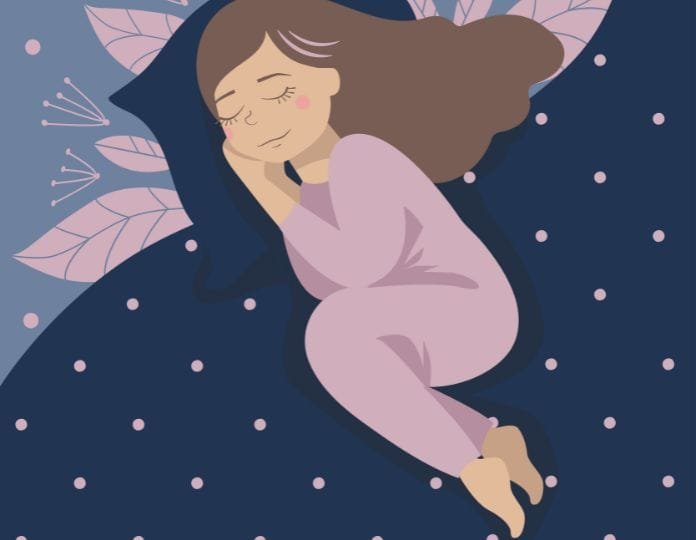It is always the alarm that could ruin the desired moment that we never get to experience in our real life. Everyone had a moment like dreaming of some situation such as urinating on the bed, falling from a height, and a close one passing away. Have you ever wondered about why we dream, their origins, and what that dream trying to convey? And why do dreams fade from memory so quickly? Extensive research is currently underway to uncover the secrets of dreams. Moreover, there exist different types of dreams, each with unique characteristics. And let’s dig into it.
Pioneers and Their Sayings
Before the types of dreams, we have to explore the history, pioneer the concept of dreams. There are some contributors like Aristotle, Sigmund Freud, Wundt, Hildebrant, Maury, Jessen, Radstock, Krauss, Strumpell, and Kant. There was a belief in ancient days that a dream was a divine proclamation and assumed dream was a foreteller.
Aristotle believes that dreams come from the sensory inputs we experience in a day that are retained in our minds, he focuses on the naturalistic explanation of dreams rather than spiritual interpretation and Maury says that what we said, what we did and what did we think were reflected in our dream and Jessen beliefs that the gender, lifestyle, age, experiences are the determinant of the dream and Hildebrant says that the dreams are related to the reality but it has the tendency to show the things that are not connected with our reality.

Freud plays a vital role in the concept of dreams and he also wrote a book about dreams called “The Interpretation of Dreams” he also used a technique in his therapeutic technique to uncover the unconscious, so-called dream analysis. He said that dream is uncovering unconscious material and during sleep, material arises from the unconscious to the conscious.
During dreams, our wishes, needs and fears are expressed and he also refers to dreams as the “royal road to the unconscious”. And he also gives two levels of content namely, latent and manifested content here latent content is hidden or symbolic meaning, our motives, wishes, fears, unconscious feeling and manifested content are the content of dreams that appears to the dreamer exactly as it is.
Read More: How can Dream Analysis Shape Your Reality?
Sleep and Dream
There are two phases of sleep: Non-REM and REM sleep, with REM sleep being the stage where the majority of dreams occur. REM means Rapid Eye Movement, in this stage body temperature increases, the heart beats fast and the eye moves rapidly. Dreams in REM sleep tend to be more bizarre, detailed, vivid, and longer. Sleep paralysis prevents us from acting upon our dream, and the inability to move the voluntary muscles during sleep, especially in REM sleep.
Dreaming can happen at any stage of sleep, but it is most common and vivid during REM sleep. 90% of the dreams occur during REM sleep because in REM sleep brain activity increases significantly compared to non-REM stages.
Read More: The 5 Stages of Sleep Cycle
Types of Dreaming
Types of dreaming, there are several types of dreams namely, lucid dreams, nightmares, night terrors, daydreaming, and false awakening.
Lucid Dream
Lucid dreaming occurs when you become conscious of being in a dream while the dream is still ongoing. This typically occurs during REM sleep, like most dreams. About 55 per cent of individuals have experienced at least one lucid dream in their lifetime. In a lucid dream, you are conscious of being in a dream state, which involves metacognition- awareness of your awareness. This awareness often allows control over the dream’s events. Some find lucid dreams extremely lifelike, while others perceive them as somewhat unclear.
Additionally, experiences of lucid dreaming can vary each time they occur. Stephen LaBerge was the pioneer in lucid dreaming, he also conducted much research to understand lucid dreaming and identify its benefits. As a result, lucid dreaming was found to help treat various conditions involving PTSD, anxiety and nightmares, increasing motor skills, and improving creativity.

DayDreaming
Most of us zone out while our math teacher teaches an important problem and find ourselves in a daydream about exploring Hogwarts, holding a holly wand, flying in Nimbus 2001 and making magical potions. Daydreaming involves shifting attention from external surroundings to internal thoughts and emotions, typically occurring while awake. It often includes imaging visual scenarios and pleasant or desired situations.
Numerous psychological studies have explored daydreaming, revealing that nearly all adults engage in daily daydreaming, which constitutes approximately half of their total thoughts. Psychologists consider daydreaming a natural and essential human behaviour. Daydreaming typically occurs when the brain lacks external stimuli, prompting it to activate a default network that generates these mental wanderings. Daydreaming represents an altered state of consciousness characterized by reduced awareness of external surroundings.
Epic Dream
Do you remember any dream that you can’t able to forget and give its impact even after waking up? It’s called an epic dream. Epic dreams are incredibly vivid, often remembered for years or even a lifetime. They are rare occurrences but are truly worth experiencing when they happen. These dreams allow you to recall them as if they occurred just yesterday, their details and events remaining remarkably clear in your memory. Everyone can recall a few dreams from their past, but what sets epic dreams apart is the intense emotional impact upon waking up.
Whether pleasant or nightmarish, we can easily differentiate these experiences. Epic dreams evoke powerful emotional responses that distinguish them from other types of dreams. Those who have experienced an epic dream in their lifetime can readily identify it by the euphoric sensation they feel upon awakening. Enthusiasts of dream interpretation view epic dreams as profound, potentially life-changing events. In contrast, scientists define epic dream disorder as relentless, emotionless, dreaming filled with repetitive, mundane tasks throughout sleep, often leaving individuals feeling excessively fatigued upon waking.
Read More: The science of sleep: what goes on in your brain when you sleep?
False Awakening
A false awakening occurs when a person experiences a vivid dream of waking up from sleep, while in reality, they remain asleep. Unlike typical dreams that often involve fantastical scenarios, false awakenings are typically mundane, where the dreamer believes they have awoken in familiar surroundings like their bedroom or office. These dreams can closely mimic real-life settings, though small discrepancies such as malfunctioning lights or doors leading to unexpected places may occur.

Although false awakenings are often described as vivid and strange, experts do not consider them harmful. However, like other phenomena occurring at the boundary between wakefulness and sleep, false awakenings can sometimes provoke fear, discomfort, or anxiety. False awakenings can occur repeatedly in succession, which can be distressing for the person experiencing them, as they may feel unable to fully wake up. Additionally, false awakenings may result in false memories, where individuals recall having performed actions only to later realize they were part of a dream.
NightMares
Nightmares are vivid dreams that can be frightening, disturbing, strange, or otherwise troubling. They tend to occur most frequently during rapid eye movement (REM) sleep, the stage associated with intense dreaming. These unsettling dreams tend to happen more often during the later part of the night when the duration of REM sleep becomes longer.
According to a study, the three most frequent themes in nightmares were related to death or dying, physical violence, and being chased or hunted. Upon awakening from a nightmare, individuals typically have a clear recollection of the dream and may experience feelings of distress or anxiety. Physical symptoms such as fluctuations in heart rate or perspiration may also occur upon awakening from a nightmare. Nightmares are considered a common experience for most individuals, though they can become problematic if they significantly disrupt daily life or sleep patterns.
Read More: Do you know about nightmare disorder?
Night Terrors
Night terrors or sleep terrors are more frequently seen in children than in adults. During a night terror episode, individuals awaken in a state of intense fear with only a vague recollection of their dream content, if any. They often exhibit symptoms such as screaming, kicking or thrashing about, sweating, rapid breathing, elevated heart rate, and confusion about their surroundings. Unlike dreams, night terrors are not considered a form of dreaming but rather a distinct sleep disturbance.
Occasional night terrors typically do not raise significant concerns. But if, the night terrors occur frequently, consistently disrupt the sleep of the individual experiencing them or family members, risk of injury, daytime symptoms include severe sleepiness or difficulties with activities, and terrors persist into the teenage years or start during adulthood, it is recommended to consult a doctor or healthcare provider.

Night terrors and nightmares seem more similar, but night terrors primarily occur during non-REM sleep, whereas nightmares usually occur during REM sleep. Children, who have more non-REM sleep, are more prone to night terrors, whereas nightmares can affect individuals of any age. Nightmares are often vividly remembered dreams, while night terrors are typically forgotten upon waking.
Dreams are the loyal roads to the unconscious mind and it is also fascinating, they help to discover buried emotions, desires and fears. They can be divided into lucid dreaming, epic dreams, daydreaming, nightmares, and night terrors. All of them serve different purposes. If the dreams cause any distress in life and lead to any unwanted consequences, seeking mental health professionals could be appreciable.
Read More: Influence of Horror Movies on Sleep and Dreams
FAQs
Do dreams have meanings?
Some experts and people believe that dreams are the road to the unconscious and that dreams expose our desires, emotions, and fears. The interpretation of dreams is subjective and varies widely.
Should I be concerned about the night terrors of my child?
Night terrors diminish as they grow old, but night terrors occur frequently and disturb the child’s sleep and daily functioning it is advisable to seek the help of mental health professionals.
Do my dreams reflect real-life experiences?
Yes, dreams can incorporate our daily life emotions, expressions, experiences, and subconscious thoughts. But dreaming does not occur as same as we experience it, it is distorted and exaggerated.
Why do I forget my dreams?
Multiple factors play a role in forgetting the dreams including sleep patterns, environment, individual differences, and lifestyle.
Does everyone forget their dreams?
No, not everyone forgot their dreams. They differ from person to person. But it is common to forget the dreams of many people.
Read More Articles from Psychologs
- Why Daydreaming is good for you?
- Do you Know these Facts about Dreams?
- Why should you start Dream Journaling?
- Transforming Nightmares into silent Dreams
- Hay Festival 2024: Authors Signified DayDreaming Important for Cognitive Development
References +
- Barber, N. (2023, September 15). What is the meaning and cause of false awakening dreams? The Sleep Matters Club. https://www.dreams.co.uk/sleep-matters-club/what-is-the-meaning-and cause-of-false-awakening
- dreams#:~:text=What%20are%20false%20awakening%20dreams,awakenings%20are%20usuall y%20completely%20mundane
- Ciccarelli, S. K., & White, J. N.(2018). Psychology: An exploration (4th ed.). Pearson.
- Elmer, J. (2020, May 20). Different types of dreams and what they may mean about you. Healthline. https://www.healthline.com/health/types-of-dreams
- Nunez, K. (2023, March 22). 5 lucid dreaming techniques to try. Healthline. https://www.healthline.com/health/healthy-sleep/how-to-lucid-dream
- Pacheco, D., & Pacheco, D. (2024, May 8). False awakenings. Sleep Foundation. https://www.sleepfoundation.org/dreams/false-awakening
- Sleep terrors (night terrors) – Symptoms and causes – Mayo Clinic. (2024, January 13). Mayo Clinic. https://www.mayoclinic.org/diseases-conditions/sleep-terrors/symptoms-causes/syc 20353524













Leave feedback about this